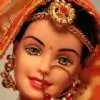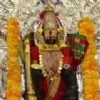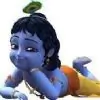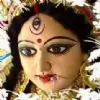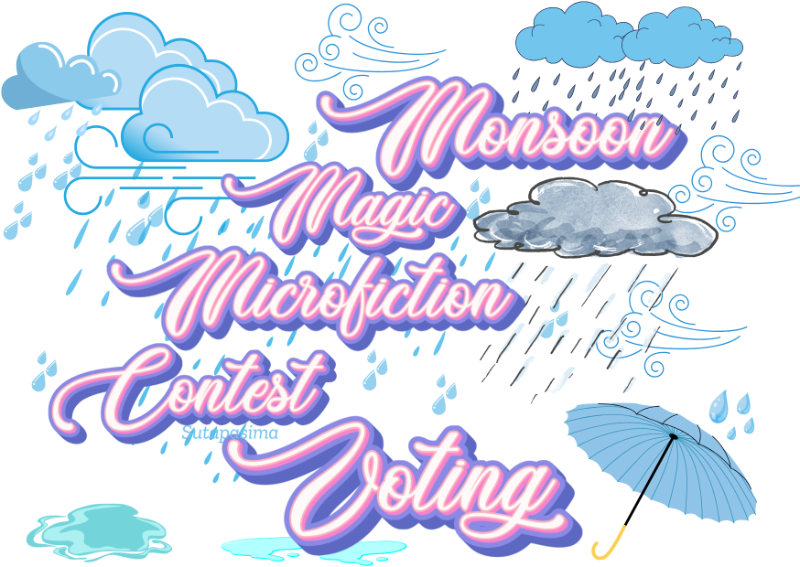The vast literary references to Skanda or Murukan or Subrahmanya throughout the history of Sanskrit and Tamil literature alike prove his importance as a pan-Indian deity. The poets of Paripatal are familiar with the Skanda mythology. Murukan of Tamil, the 'Red-god' bears the 'gem-like' peacock flag and rides a peacock or an elephant and is the commander of the hosts of heaven. In Tirumurukarruppatai he is the child of the daughter of Himavat, born down to the earth by Agni and nursed by six Krittika devis and the vanquisher of the demons.
Arunagirinathar with 'sublimity of thought and depth of mystic feelings', Kumara Guru Para with his devotional hymns and many others including Saint Ramalinga have sung the glory of this 'embodiment of grace', and unfailing compassion of the Lord. By the time of Tirumurukarruppatai, Murukan worship was prevalent throughout South India. For Brahmans he was personification of the sacrifice; for warrior chieftains he was known for his valour, for rishis he was the object of 'meditation and austerity' and also as a source of wisdom and integration. Murukan had become the source of 'eternal youthfulness' as well as 'release and liberation'.
Skanda in the Upanisads, Brahmanas and Sutras
The Chandogya Upanisad (ca. 7th Century B.C.) identifies Skanda with the Vedic sage Skandakumara: 'tam Skanda ityacaksyate' (7.26.2). Skanda was regarded as a separate deity, but not as a war-god by the time of Chandogya Upanisad. Rather, the early Skanda was regarded as a 'religious teacher'. His identification with Sanatkumara has been explained by M. Mukhopadhyaya: "Ksastriyas had influence in the formulation of upanisadic doctrines and the brahmanic policy of drawing Ksatriya sympathy attributed the teaching of secret knowledge to Ksatriya chiefs. And in this background it may not be improbable that Sanatkumara was identified with the divine army chief.1
| |
| |
| |
S.S Rana feels that the common parentage -- Skanda described as the son of Brahma, Sanatkumara also being son of Brahma -- and the similar functions of both led to the identification of Skanda and Sanatkumara in Chandogyopanisad.2 In the Satpatha Brahmana Kumara appears as one of the aspects of the Rg Vedic god of war, Agni. By the time the Skandayaga text of Parisistas of the Atharvaveda came into being, his association with the peacock was known.3 His description includes bells and banners4 and is having mothers around him.5 Siva, Agni and the Krittikas are described as his parents.6
The mixing up of various motifs is such that Skanda is associated with Agni, Krittikas, Pashupati and Rudra. However the rsi says 'whoever you are I pray to you!7 In Baudhayana Dharmasutra, Sanmukha, Jayant, Vishakha, and Mahasena are some of the names of Skanda. The offerings of oblations for these and his parsadas and parsadis suggest his being recognised as a war-god.8 This process of rituals and oblations for Skanda are described in Kathakagrhyasutra and Agnivesya Grhyasutra, etc. Various other references in sutra literature suggest that the myth of Skanda - Kumara existed by this time and that he was a popular god by the time sutras were written.
Explaining Panini's sutra 99, Patajali mentioned the images of Siva, Skanda and Visakha. The expression samratipugartha indicates the worship of these gods. Images of these gods were sold by the Maurya kings for replenishing their royal coffers (A.K. Chatterjee p. 29).9 From Patajali we come to know the separate identity of Skanda and that Visakha came out of the right side of Skanda when Indra struck him with his vajra.
A.K. Chatterjee has given some references to prove that Skanda was worshipped as a god, probably even in the lifetime of Buddha (6th Cent. B.).10 Kautilya has referred to Skanda as Senapati, the Generalissimo of the celestials.11 It is known that temples of Karttikeya existed during the time of Kautilya.
Skanda-Karttikeya in Mahabharata
Chapter Sixteen in Mahabharata describe in detail Skanda-Karttikeya. Ten chapters of Vanaparva, three in the Salya Parva and three in Anusasana Parva provide details regarding the birth and exploits of Skanda. The development of the Skanda-myth in Mahabharata is quite evident. In Vanaparva Skanda is the son of Agni and Svaha. Agni is, of course, identified with surya. In Vanaparva when Karttikeya displayed his enormous capabilities the devas instigated Indra who after initial hesitation declared war against Karttikeya. Indra was completely defeated. The thunderbolt hurled by him at Skanda pierced him on the right side. A new god Visakha came out from the right side of Skanda.
When Indra accepted the superior capabilities of Karttikeya and requested him to become the king of devas he politely refused and instead agreed to become the Chief Commander of the Devasena ('army of devas'). The growing power and prestige of Skanda is quite apparent in this episode. Skanda achieved a very prestigious place as a deity and only next to Visnu and Siva in importance. The salyaparva refers to his intimate relationship with mothers. A.K. Chatterjee correlates this with the 'mother worship in vogue in the days of Mohenjadaro'. There are references where Skanda is termed as Yogisvara or Mahayogi. This idea was later on developed in the Puranas.
In Mahabharata, Rudra, Uma, Agni and Ganga request Brahma to perform the rites of making child Kumara the generalissimo of the army of celestials which is done on the banks of river Sarasvati. Here Skanda assumes four forms - Sakha, Visakha, Naigameya and Skanda. Sakha goes to Ganga, Naigameya to Agni, Vishakha to Parvati and Skanda to Rudra. All the four claiming to be the parents of Kumara achieve satisfaction.
A large number of gifts are presented to Skanda after which he kills all the demons. Taraka, the chief and Mahisa his aide are destroyed. Daitya Bana hides in Krauca Mountain that is pierced by Skanda and the demon is killed. He is praised for his victory. Some call him son of Mahesvara others associate him with Agni, Ganga, Parvati or Krittikas.
Skanda-Karttikeya in Ramayana
The Balakanda of the Ramayana provides a direct role of Agni in the birth story of Skanda. Although in one version Skanda is described as the son of Siva but the role of Agni is also mentioned. As he is named Karttikeya the relationship of Krittikas was known. When Rama is proceeding to the forest Kausalya invokes the blessings of Bhagavan Skanda for the welfare of Rama during the exile.12 In the Agastya hermitage a shrine of Karttikeya and other gods is mentioned.13 Various other references about Skanda e.g. a great warrior, Mahasena, sakti as his weapon and peacock as his vahana, his name Guha, his piercing the Kraunca mountain etc. are available in Valmiki Ramayana.
Skanda-Karttikeya in Puranas
The description of the birth and other aspects of Skanda-Karttikeya occurs at various places in a number of puranas. Vayu Purana (generally placed between 350 BC and 550 AD) describes the birth and exploits of Skanda which is similar to Ramayana. It confirms the account of Mahabharata-Vanaparva by describing Skanda as the son of Agni by Svaha (1.8.11). The account of Brahmanda Purana, one of the earliest but later than Vayu Purana, tallies with that of Vayu.
The Matsya Purana (Chapters 158-160) Provides a 'romantic elucidation' of the story of Skanda as given in Ramayana and Mahabharata (Salyaparva). Here the Krittikas provide drinking water to Parvati, who was taking bath in the golden lake created by the semen of Siva which Agni and other gods were forced to swallow, and which burst out of their bodies after sometime. The condition of Krittikas was that on drinking the water the son who would be born to her right side, the three lokas were filled with the bright golden rays emanating from his body.
By the time of Vamana Purana Karttikeya's birth was from 'Agni' but mother became Kutila - another daughter of Himalaya but this idea does not appear in any other Purana. We have a philosophical interpretation regarding the birth of Skanda in Varaha Purana. The poet is aware of the variations about the origin of Skanda in previous ages.14
From the union of Prakrti (Uma) and Purusa (Siva) is born Ahamkara the highest tattva or param tattva (Varah 25.1-5)
In Brahmavaivarta Purana Skanda is identified with Visnu. In Bhagavata Purana and Visnudharmottara Purana. (III.71.7) Kumara-Karttikeya is the manifestation of Visnu for leading the devasena in battle against the demons.15 It was perhaps an effort of reconciliation of different sectarian cults. Later on Maya of Visnu is identified with Parvati (Brahmavaivarta Purana III. 15.34), who is accepted as mother of Karttikeya.
Skanda, an instructor god, identified with Sanatkumara in Chandogya Upanisad is endowed with the epithet 'best among the knowers of Dharma' (Matsya Purana 184.2-4). He provides the secret of Mahadeva to the rsis. The knowledge of Skanda acquires such dimensions that in Skanda Purana even Siva acknowledges his superiority.16 In Mahabharata (IX.46.14) Karttikeya is described as Yogisvara.
This aspect is continuously remembered. Skanda as a yogi is the subject matter of various puranic references. Brahmavaivarta Purana mentions the foster-mothers Krittikas as yoginis and kalas of Prakrti (III.15.36). The reason of Skanda being depicted as a 'yogi' or 'preceptor of the yogis' is his being the son of Siva, the great yogi. An allegorical meaning is also available whereby the energy of Siva (transcendent Divine Being) and Parvati (female energy) descends to the level of matter (ejected semen) taken by Agni (Susumna). The River Ganga is the left cord. In the words of V.S. Agarvala, 'from there it was thrown in grove of reeds, which is the body itself or more properly Sahasrara, the centre of thousand spokes in which each spoke is compared either with a reed or to a petal of Infinite Mind, that inheres in the highest centre.17
Karttikeya is quite often compared to the Sun. In the earliest Vedic literature Sun god is connected with Agni; Surya is another aspect of Agni. From very early period Skanda and Agni are associated, hence the relation of Skanda with Surya is quite natural. In Vayu Purana Skanda is 'Adityasatasankaso mahatejah pratapvan.' In Brahmanda Purana the epithet used is Dvadas'arkapratapavan. Various other puranas reveal his association with the Sun-god.18
The motifs of Son, Sun and Warrior
The motifs of son, sun and warrior have been analysed in detail (Clothey: "Sonship is not necessarily related to physical generation; the role of the son is "as a manifestation or realisation of that being or idea which is called . . . father." In Brhadaranayaka Upanisad the son is explicitly understood as a manifestation and fulfillment of the idea represented by father, and the father is said to be poured forth in manifestation in the son.
Similarly the warrior motif is related to Vedic Indra, Agni and Rudra. Warrior is the preserver of Dharma. Warrior destroys the enemies and is the savior of the cosmic order, hence he is a creator who preserves the old order and initiates the new order. The motifs of son-sun-and warrior coalesce in Skanda. The chronology of the development of these cosmological and mythological aspects are encased in obscurity but the fact is that 'Skanda mythology embraces motifs that had already developed in earlier Vedic mythology'. The son, warrior and sun attributes had been associated earlier with Indra, Agni and Rudra. Incidentally all the three have association with Skanda.
It has been argued that the admittance of Skanda in the Aryan pantheon (as distinct from the probable Skanda cult in the Indus Valley culture) and his subsequent association with Rudra-Siva necessitated the merging of Skanda myth with the Siva-Parvati myth, though his early association with Agni was not contradicted (Rana S.S.).19 This is in line with the development of Son-Sun-Warrior myth noted herewith.
Skanda in Kalidasa
Kumarasambhava represents a transition period from late Epic to early puranic times. Cantos 9 to 11 describe the "three stages of gestation of Siva's emanation, Kumara: first within Agni, the Divine Fire; second in Ganga's waters. One ought to remember that Ganga also born of Himalaya is Siva's consort and regarded with intense jealousy by Gauri; then taken in by Krittikas, the Pleiades into their wombs when they bathe in the holy waters of the river. Unable to bear the burning heat of the fetus, they throw it back into Ganga, who pushes it into a clump of reeds on the bank. Siva's emanation Kumara is born in this spot. Parvati chances upon the new born babe, 'blazing in splendor' and accept him as her own son..." Chandra Rajan explains that 'Kumara, the son is self-begotten of Siva. In the metaphysical terms it might be appropriate to regard Kumara as the emanation of Siva. In Meghadutam the idea is already incorporated:
Skanda has made that hill (Devagiri) his fixed
For his is the blazing energy, sun-surpassing
That the wearer of the crescent moon placed
In the Divine Fire's mouth to protect Indra's hosts.
In the next stanza the request to Meghadutam continues -- spur the peacock the fire-born god rides to dance.20 In Kumarasambhavam the appointment of Kumara as general of the gods and his conquest of Taraka and other asuras has been described:
Siva's son, his lotus face radiant with joy, released a missile that was like the Fire that consumed the universe at the end of time.
This results in the Lord of Titans being fatally struck and falls on the ground like a mountain peak hit' thus making devas led by Indra jubilant. (Canto 17-49,51)
The names of Skanda used by Kalidasa include Kumara, Sadanana, Sanmukha, Sanmatura, Guha, Saravanabhava, Sarajanma, Karttikeya and Pavaki. Kalidasa provided a new splendor to the already brilliant myth of Karttikeya. The poet was familiar with the Mahabharata, Ramayana and Siva Purana descriptions of the Skanda story.
Bana Bhatt, a contemporary of Harshavardhana, mentions the slaying of Taraka and Krauca. The sakti of Skanda and its immense capability is described; riding on a beautiful peacock, he carries a red cloth banner.
When Skanda myth was absorbed by Siva-Parvati concept various interpretations for the symbolism were provided. Siva is Sat (Existence): Uma is Cit (Knowledge) and Skanda is ananda (bliss). The three together constitute Brahman who is Existence-Knowledge-Bliss Absolute. Skanda as the form of Ananda is an aspect of the Supreme. Anado Brahmeti Vyajanat' (Taittireya Upanisad III, 6)21 "The peacock -- his vehicle -- represents Vedas, his weapon Sakti is Brahmavidya, i.e. Jana-Sakti (Power of Knowledge)... Vedas being the sabda or sound form of the universe and the peacock symbolizes the universe or the evolutionary trend of Maya. The cock on Skanda's banner stands for nivrtti or the path of wisdom leading to the Knowledge of the self".22
Swami Harshananda23 has associated Skanda with the 'spiritual perfection'. His six heads represent the five sense organs and the mind, which co-ordinates their activities. By the control, refinement and sublimation the concept of highest level of perfection is achieved. Another dimension of symbology is linked with yoga, the six centres of psychic energy, of consciousness in the human body. When a yogi is able to raise his psychic energy to the uppermost Sahasrara Cakra, he achieves the vision of supreme knowledge, Siva-Sakti. This supreme knowledge and perfected state of spiritual consciousness (Turiyatita) is represented by Skanda-Karttikeya.
By riding the peacock that kills the snake that stands for 'time', shows that he is 'beyond what is within time and outside it'. Snake represents lust and northern Indian Skanda is throughout a personification of celibacy. Peacock is creation in all its glory' hence the master of creation Skanda rides it. It may seem to be a devotional interpretation of a devotee but the inherent meanings and psychological interpretation of the concept of Skanda has an unusual charm surrounding it from the beginning.
Skanda Worship and Iconography
Worship of Skanda was prevalent in north India quite early. Bilsad stone pillar inscription of the time of Kumaragupta (415-16 AD) and various other stone and bronze sculptures discovered from northern and eastern India are a testimony to the popularity of Skanda.
A red sandstone image of Skanda (2nd cent AD) at National Museum, New Delhi; sculptures of Skanda as 'instructor god' in the Gwalior Museum; image of Kumara Karttikeya at Baijnath, Almora (U.P) in the Parvati temple and a sculpture from Himachal Pradesh at National Museum, New Delhi are a testimony of the popularity and importance of Skanda. A large number of sculptures ranging from 7th century Ad onwards found in the eastern India, Rajasthan, Madhya Pradesh and also from Chamba hills and Mandi area of Himachal Pradesh further establish the antiquity and prevalence of Skanda 'holding the portfolio of defense in the kingdom of heavens'. Yaudheyas, an ancient Indian military tribe, had adopted him as their spiritual and temporal ruler. Kumara Gupta of Gupta dynasty, Devamitra of Ayodhya (1st Cent. AD) and Vijaymitra are also known as devotees of Skanda.
| Yaudheya coinage of Punjab (300-340 AD): Karttikeya standing facing, holding sceptre; peacock on right. In Brahmi: 'Yaudheya Ganasya Jaya' (Victory to the Yaudheya people). Reverse: Goddess standing with hand on hip, wearing transparent garment. |
| |
Rohtika -- now Rohtak in Harayana near Delhi --was historically a town of Yaudheyas. Mahabharata description24 of this being a favorite city of Karttikeya is confirmed by the discovery of several Karttikeya type coins.
The famous text of northern Buddhism, Mahamayuri (4th Cent. AD) mentions that Kumara Karttikeya was the well-known deity of Rohitaka.25 Although Skanda is no longer known in this area, his vahana the peacock is treated as sacred and its killing is a taboo (perhaps due to other reasons).
The discovery of 5th century AD six-armed image of Skanda in the ruins of Avantipura indicates that he was present in Kashmir. References from Nilamata Purana of a 'Kumaraloka' indicates that Skanda had an important place as a deity. Mention is also available of 'Skandabhavana-Vihara' in Kalhana as indicated by Stein in Rajatarangini, (Vol. II, p. 340). The name of the founder was Skandagupta. The available detailed information of copper coins of Devamitra, King of Ayodhya (1st Cent AD), the carved pillar shaft near Kanpur suggest the popularity of Skanda-Karttikeya in U.P. areas.
Skanda sculptures traced at Mathura of Kanishka's time and of the later period inform us of Skanda worship. There is sufficient evidence to prove that Skanda was publicly worshipped in temples, specific instance being of Dasavatara temple at Devagarh in Jhansi area and the discovery of several Skanda sculptures from this area belonging to post-Gupta period. The popularity of Skanda worship in ancient times in Bengal, Maharashtra, Gujarat, Madhya Pradesh, Orissa etc., is also a known fact. By providing information from various memoirs of Archaeological Survey of India and other research works Rana S.S. (pp. 96-106) has explained this in his work.
The image of Karttikeya or Kumara signifies the idea of youth and spirit. The very name Kumara indicates strength. His vehicle the peacock and his attendants all symbolize energy and strength. The sculpturing of Karttikeya as explained by D. D. Sukla26 and J.N. Banerjea27 provide he intricate details for the purpose. In this context also the emphasis is on representing his figure 'like the morning sun', clothed in red cloths and 'himself having a fiery red color.' His youthful form should be 'beautiful, auspicious and pleasing to look at'. His face is full of smile, splendor, grandeur and his 'head is adorned with variegated and beautiful crowns' etc.
The details about Skanda-Karttikeya sculptures indicate the interest shown in the god and his various aspects, especially as the commander of the army of gods. His general form, six headed, the five fold Skanda, multi-armed Skanda are described. The Uttarakamika Agama, Ansumad Bhedagama, Purakarnagama, Kumaratantra etc. Provide unique, detailed attributes of the appropriate forms of the images of Skanda.2





